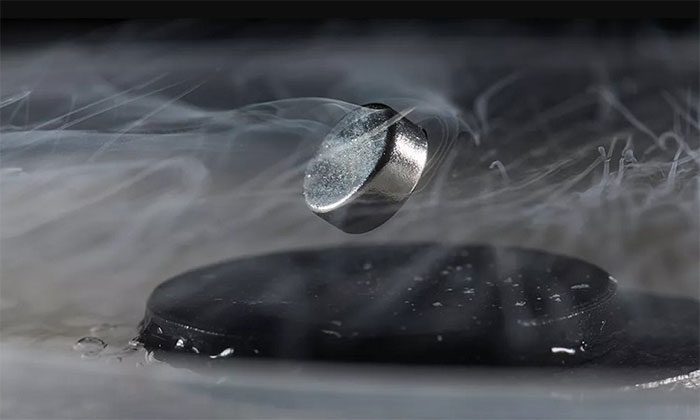Recent research on a new superconductor that operates at room temperature has left many experts skeptical about its validity, sparking a global wave of simulations.
Experiment with the superconductor material sample LK-99. (Video: Gigazine).
South Korean scientists recently announced the creation of a superconductor at room temperature and pressure. Currently, researchers worldwide are racing to replicate the findings. According to the research team, the material named LK-99 can conduct electricity at everyday temperatures with absolutely no resistance. If the scientific community confirms that LK-99 is a room-temperature superconductor, this discovery could pave the way for previously impossible ideas such as nearly lossless power transmission and cold fusion reactions, according to Live Science.
However, experts urge caution. The results described in two papers shared on the arXiv database have not yet undergone peer review. To date, no one has successfully replicated the results. “If you read the papers, even if you are not scientifically literate, you can see that they lack refinement,” stated Michael Norman, a condensed matter theorist at Argonne National Laboratory, one of the labs attempting to replicate the findings.
To create the new material, the South Korean researchers (most of whom work for a startup called the Quantum Energy Research Center in Seoul) mixed a powder containing lead, oxygen, sulfur, and phosphorus, before adding a small amount of copper. After several hours of overheating, the mixture transformed into a gray solid with electrical resistivity approaching zero at 30 degrees Celsius.
Resistance measures how many electrons are impeded by internal friction as they pass through a material. Scientists have understood the basic physics behind low-temperature superconductors for decades but still face challenges in synthesizing such materials at higher temperatures.
One characteristic of superconductors is levitation. As electric current flows through, it generates a magnetic field; when the material transitions to a superconducting state, electrons move without friction. The generated magnetic field can repel an external magnet with an equal and opposite force. When placed above a magnet, the superconductor will perfectly hover in the air, a phenomenon known as the Meissner effect.

Before taking shape, LK-99 goes through two phases: a diamagnetic insulator.
In a video shared online, pieces of LK-99 levitate at least partially in mid-air. In the footage provided by the research team, a sample the size of a coin hovers on one side while the other side is in contact with a magnet underneath.
So far, scientific institutions have conducted 11 attempts to replicate the discovery, and 7 of these institutions have shared their results. Among those 7, 3 found similar characteristics but not identical to LK-99. Results from the Huazhong University of Science and Technology and the University of Southern California describe levitation properties, while a research team from Southeast University in China detected resistance reduction at -163.15 degrees Celsius. The remaining 4 institutions did not observe any magnetic or superconducting properties.
The mixed results may stem from samples produced with impurities as laboratories rushed to replicate the discovery. “My team has not been able to replicate the superconductivity of LK-99 despite numerous ongoing tests,” shared V. P. S. Awana, head of the team at the Indian National Physical Laboratory. “The key issue is replacing part of the lead with copper in the apatite lead chain. This is not an easy task.”
On the other hand, preliminary results may indicate deeper issues with the original research. Before taking shape, LK-99 goes through two phases: a diamagnetic insulator (repelling a magnet and not conducting electricity) and a paramagnetic metal (attracted to a magnetic field and conducting electricity). Scientists speculate that if these two phases do not clearly connect, they may cause significant confusion. In other words, each phase may exhibit behaviors that could be mistaken for superconductivity.
Despite the skepticism, scientists remain intrigued by the new material. If it levitates at room temperature, some experimental results and preliminary hypotheses suggest that LK-99 may possess several fascinating characteristics.


















































